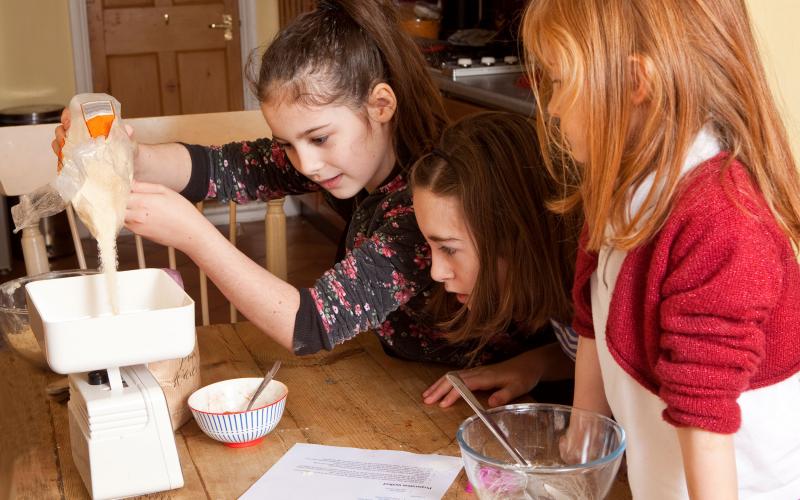Record Keeping & Reflection
The 4-H motto is ‘learn by doing’; but ‘doing’ includes so much more than just a once and done activity. Doing refers to the full process of completing a project—experiencing, sharing, understanding, relating, applying, recording, and reflecting.
These last two steps, reflecting and recording, are often overlooked or forgotten. We may be inclined to skip these steps for the sake of time, but by doing so we are hindering learning opportunities. During the course of a project youth learn by seeing (visual learning), hearing (auditory learning), and participating in activities (kinesthetic learning). When combining all of these learning styles together the concepts being explored become more concrete. The act of recording in a notebook offers yet another layer of learning by providing an opportunity to reflect on what was done, what was learned, and engage youth in thinking about what’s next.
Science & Engineering Notebooks
In the world of science and engineering, these records serve as a map of where we have been and what we have learned. Science and engineering projects can take weeks, months, and sometimes even years; making it even that much more important to document the process.
Scientists and Engineers use special notebooks or journals to make daily logs of what they are doing and what they have learned. These logs include things like:
- brainstorming processes
- research
- interviews
- sketches
- pictures
- procedures
- observations
- calculations
- screen shots
- challenges
- failures (aka: learning opportunities)
- successes
The logs in the notebooks must be clear and thorough so that they can be used as a reminder of why certain designs were chosen or how certain conclusions were drawn. Additionally engineering notebooks (if done properly) can serve as a legal document to assist with patenting ideas.
For youth engaged in science and engineering projects, notebooks are valuable for developing a deeper understanding of the process as well as assisting with the development of final reports. In some instances, such as robotics competitions, the engineering notebook may even be a requirement.
Youth have different organizational styles and needs based on individual learning preferences and age, so there are multiple ways in which science and engineering notebooks can be completed. For younger youth or those just getting started, a worksheet based notebook may be the best. But for those older and more experienced youth, blank engineer ruled notebooks are ideal as they provide more freedom for youth to choose their method of communication.
For group projects, teams may opt to have a single notebook in which each individual contributes or one where a designated member is responsible for its completion. In either scenario, it is important that more than one individual review each entry and ensure that it is representative of the day’s activities.
Regardless of the style all engineering notebooks have similar objectives and require similar components.
Objectives
- Keep projects on track by:
- goal setting (what do we want to do?)
- action planning and time management (how do we do it?) and
- evaluation (how did it go?)
- Develop record-keeping and organization skills for current and future use
- Learn to communicate and summarize
- Help with any final reports or presentations that may be needed
- Provide an opportunity to reflect and apply learning
- Provide opportunity for assessment of learning
- Create accountability for youth
Components
- Date (each entry)
- Title (first page only)
- Team members present (if a team notebook)
- Scientific Method or Engineering Design Process (for the difference between the two check out Science Buddies’ explanation)
- Page Numbers (each page)
- Tasks and Outcomes (each entry)
- Signature (each entry)
Resources:
- Science Buddies: Science and Engineering Project Laboratory Notebooks
- Science Buddies: Lab Notebooks
- Science Buddies: Comparing the Engineering Design Process and the Scientific Method
- FIRST Tech Challenge Engineering Notebook Guidelines
- University of Idaho Extension Robotics FTC Engineering Notebook
References:


